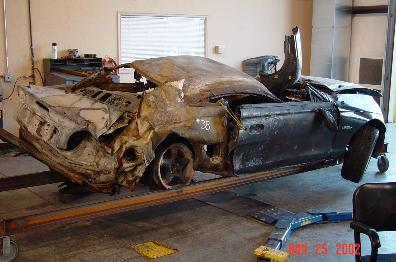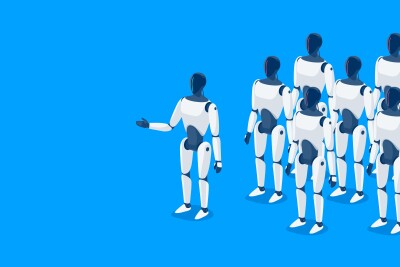Tom Langley knows a lot about automobile accidents. He investigated more than 350 automotive fatalities while serving as a Cobb County, Georgia police officer for eight and a half years. He’s spent the past sixteen years growing his accident reconstruction business, Thomas
Langley & Company, and he’s been using laser scanning since May 2003 to capture and analyze the geometry of auto accidents.
Providing services to either side in civil litigation cases and only services for the prosecution in criminal cases, Langley says he’s executed more than a dozen projects using laser scanning. He reports that in the three times he’s testified in court with laser scanning data, he’s never been challenged. His adversaries armed with a few manually collected points are no match for the completeness of laser scanned data.Capturing accident scenes better, faster, more safely
Vehicular accident reconstruction work often focuses on estimating the speeds of crashed vehicles. Product liability associated with crashworthiness of a vehicle or its components has everything to do with vehicle speed; the NHTSA (National Highway Traffic Safety
Administration) specification for the required performance of an airbag, say, is defined in part by vehicle speed or the change in vehicle speed. Determining negligence in criminal cases also devolves to speed in some instances – for example, were any of the drivers exceeding the
posted speed limits at the time of the incident? Vehicle velocities are often estimated by correlating the crush deformation of a crashed vehicle with vehicle speeds using stiffness coefficients determined from crash tests that NHTSA conducts for all vehicles. Vehicle crush is determined by measuring the crashed vehicle and comparing these dimensions with a reference vehicle, the exemplar. Other methods include measuring the length of skid marks, vehicle displacement and other accident geometry.
Standard practice in most police departments today is to measure accident scenes and vehicle crush manually using calipers and tape measures. This is time-consuming, slow, sometimes dangerous and often limited to a few tens of measurements. Slow is a big problem in areas of congested traffic. Closing a lane to measure accident sites often leaves the driving public stuck in traffic, which can lead to collateral incidents. We all suffer the economic hit of lost productivity. The police officer in charge at the scene sometimes has to make a tough call to balance the requirement to take sufficient measurements for evidence against minimizing disruption to the driving public. A lot is asked of our police forces already – to put them in harm’s way to take measurements immediately adjacent to high-density, high-speed traffic adds to their burden.
Some police departments deploy electronic total station technology to capture accident data. According to Langley, total stations are a step up from manual measurements – you get hundreds of measurements instead of tens of measurements, but the limitatio of total stations is the detail you can afford to capture. While appropriate for capturing accident scene data, it’s time-consuming and tedious to capture and process crush geometry this way.3D rendered images that juries can appreciate
Langley’s first excursion into laser scanning using a Vulcan scanner addressed some of the data issues – he could collect thousands of points, but the challenge remained to serve up 3D rendered images – the kind of images that a jury could appreciate. After months of research,
Langley settled on the GS100 scanner from MENSI(now a Trimblecompany) in May 2003. Langley speaks highly of the accuracy of this scanner as well as its portability. His work process typically involves using the MENSI RealWorks Survey software for data acquisition and
initial processing, but the deliverables are typically served up in an Autodesk product. In our interview, Langley expressed his appreciation to Autodesk for its support of police agencies. In turn Langley says he donates his time to train police personnel in the use of Autodesk
products, his way of giving to his community and those who serve and protect.
Forensic laser scanning will expand as learning curves shorten
Langley says the main limitation to more widespread use of laser scanning in forensic work is not so much budget as the learning curve required to master the technology. The scarce resource is a lack of in-house expertise. Most outside contractors are not sufficiently informed
about the legal aspects and, moreover, lack the wherewithal to invest in the technology. The technology developers also need to make the tools easier to use for service professionals such as insurance experts and police officers whose expertise is in accidents and the law along with
research and development. In time Langley expects the technology will improve and this will get government agencies into a purchasing mode.
In Langley’s work there is a clear progression of increasing data density from tens of points collected manually, to hundreds of points collected with total stations, to thousands and then millions of points collected with laser scanning tools. Where is this going? The next step, according to Langley, is to take the 3D rendered model, make it “watertight” and export it to a rapid prototyping shop to create a 3D object to put in the hands of a jury. Langley expects the acceptance of laser scanned data for forensic accident reconstruction only to increase.







